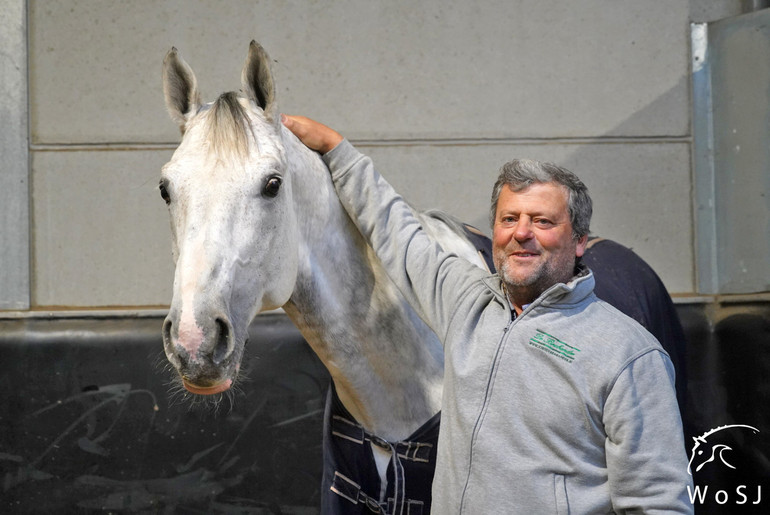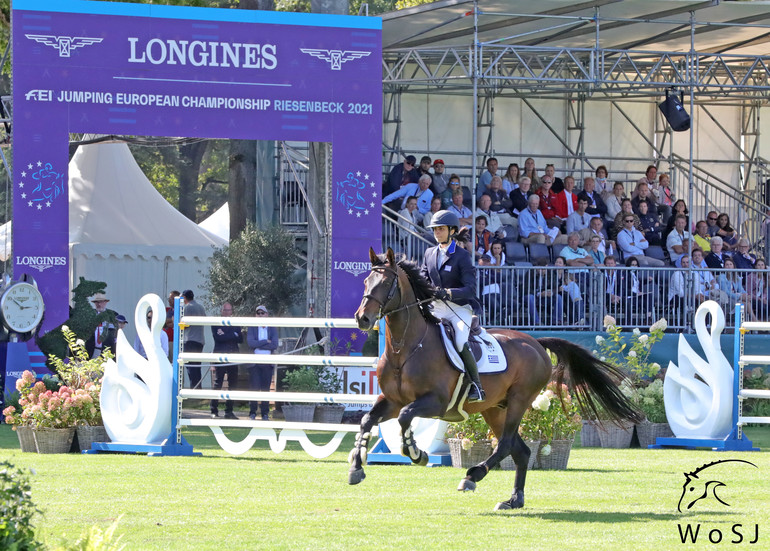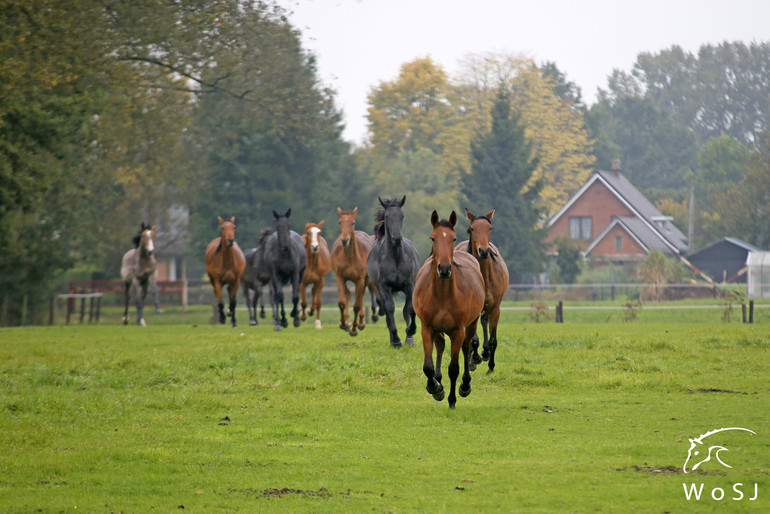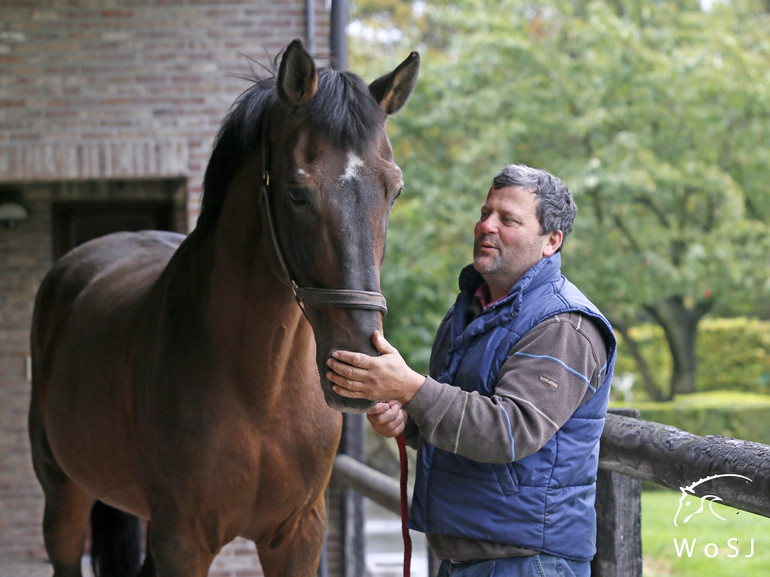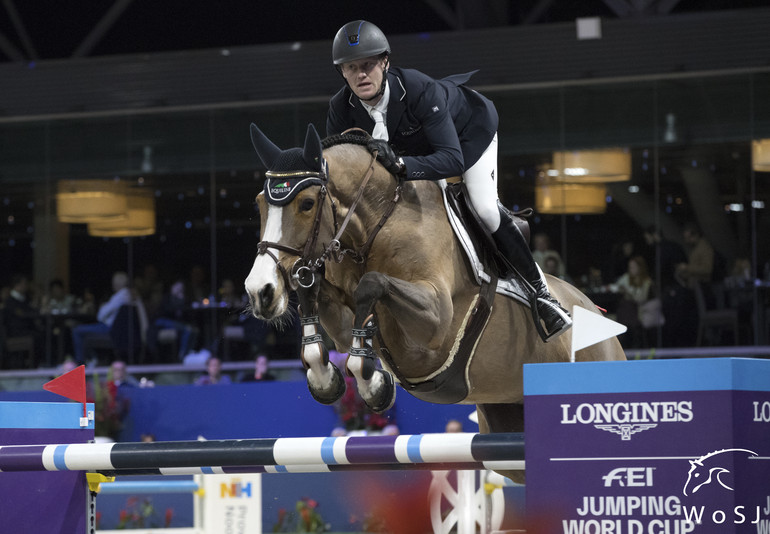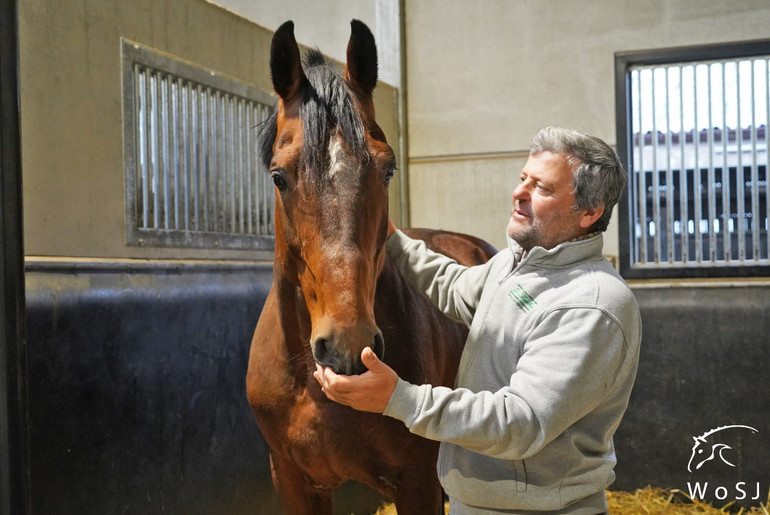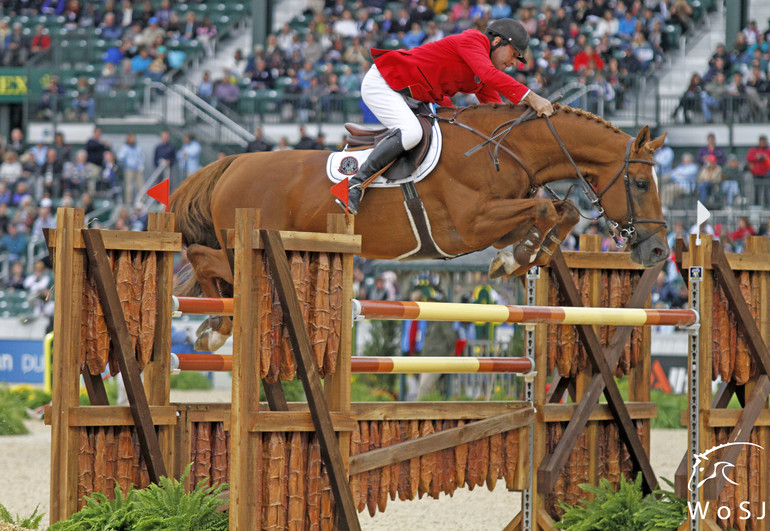Text © World of Showjumping
Eight years after our last meeting with Joris De Brabander, World of Showjumping went to visit the Belgian breeding legend at his famed Stal de Muze, in Sint-Niklaas, Belgium. What started with a few stallions back in 1987 has expanded into a huge breeding operation which includes 25 stallions, 15 donor mares and a group of 700 recipient mares, and on top comes Stal de Muze’s own sport stable. To World of Showjumping, De Brabander shares his thoughts on the change he has seen in the breeding of showjumpers, the new reproduction methods, and how good papers will never be enough.
Pioneers
“I think it is the same for everyone: We all want to breed good horses,” Joris tells about the early days at Stal de Muze. “Back when we started up, it was just me and my wife Katia – who I was madly in love with, so I named our stable after her. Katia’s sur-name is Musyck, and when she was younger, she and her siblings were called ‘the children of de Muze’. This was also at the time of Jappeloup de Luze, and “de Muze” sounded a bit the same – it was short, you could pronounce it in every language, it was a little bit mythical in my ears.”
At the beginning, it was impossible for Joris to breed with his best horses, because those were the only ones he could sell to survive financially. “While breeding is a long-term process, making money is a short-term issue, and at first, I could not combine the two,” Joris – who is a veterinarian – explains. “With embryo transfer, it became easier: I could breed a few horses, and when they were four or five, I could sell but still keep some of their offspring.”
Even though not the first, Joris was one of the pioneers in using embryo transfer, a method he learned in France, where it was used from a commercial perspective already in the 1980s. “It made me see possibilities,” Joris tells. “Embryo transfer gives us the chance to breed with good sport horses and to use frozen semen, and we took advantage of that. The good horses we have produced are the proof that it truly was an advantage. When I see Levis de Muze or Gancia de Muze, or other amazing horses we have bred, those are the results of our thinking years ago – and they turned out even better than we imagined. Those foals have been better than their mothers; Heroine de Muze and Barones – and we got these good results because we used Grand Prix stallions; we had a good mix. Is there still room for some progression? Yes, I think so. But the idea is the same as it was twenty years ago.”
Buying into bloodlines
Over the last few years, the reproductive method ICSI (intracytoplasmic sperm injection) has created new opportunities for breeders. “The breeding of jumping horses has already come so far that embryo transfer and ICSI is available to everyone,” Joris says. “That gives a lot of opportunities when it comes to genetics, and it opens doors for many people. However, at the same time it makes breeding more complicated for others – the traditional breeders don’t really find a place anymore. If it is really a healthy development, I don’t know. Now people only focus on the same bloodlines, on the same mares and very exclusive stallions.”
“ICSI makes it easier to commercialize the high potential genetic families,” Joris continues. “It gives chances to those who want to start breeding because there are more foals and embryos on the market with top genetics, and it is easier to acquire them. However, each big investor starts with the same story, and the difference you can make with the genetics is not endless. The genes only create a base for the breeding. When everyone has the same genes, you need to find a difference somewhere else. Furthermore, those that buy into good genes might know the names of the horses, but the majority don’t really know their background and history. How can you produce a top horse if you don’t really know their ancestors?”
“People try to create amazing papers, but they forget the horses behind those pedigrees – and these are the same horses you are going to do sport with,” Joris explains. “Of course, genetics are the base of everything: If you don’t have the right genes, you will not get the right performance. However, the genetics are maybe 10% of the journey of producing a good sport horse, but not a guarantee. I believe that embryos are overvalued – people give too much money just for the genes. I repeat, genetics are very important, but there is so much more to breeding.”
The culture of buying horses has also changed, Joris points out. “Before, you went straight to horse dealers, now people like to buy in auctions. It is another way of buying but I don’t see the difference; if you go to a horse dealer, they will present their horse the best they can – and an auction does the same. In the trotting community, auctions have already existed for a long while: 90% of young trotters are sold in auctions and it’s the same with thoroughbreds. The proportions for jumping horses are not yet the same, it is still new. I think there is no reason to be worried about this development, as long as there are knowledgeable and serious people behind the auctions.”
Genetics plus environment
While good genes are the base for any breeding operation, Joris points out that the impact of the environment should not be underestimated. “The genetics tell you this horse will walk, trot and gallop, but the environment – the recipient mare, the breeder, the stable – also plays a huge part,” he explains. “The trainer, the rider, the people who feed them, all those factors are so important in making of a good horse.”
“Sometimes I ask others when they think a horse’s career begins and the most common answer is when they are born, or when they are four… But I think it starts already as an embryo,” Joris says. “When you see the evolution from an embryo to a foal that is born – it is so spectacular – that it must be important what happens when they are still inside the mare. I believe factors such as what you feed the pregnant mare and her movement during pregnancy are essential. And afterwards, the care you give your foal: To have them outside as much as possible, to handle them correctly, to start early enough to educate them, to later saddle break them in a good way – all those things are so important. It is like a chain and it will break if you miss one part.”
“When a horse is genetically made to be an amazing jumper, it is impossible to do something that interferes with that. If you do the education right, amazing jumping genes will lead to an amazing jumper,” Joris continues. “To go to a free jumping contest or a foal presentation can be a part of education for your foal or young horse. Is the competition itself important? In my opinion, the answer is no – but it can still be a way of educating. It is like with children; they go to kindergarten and school. Just do something with your horse and try to discover their true qualities.”
Performance over promises
While Joris himself uses young stallions for breeding, he believes that an actual career weighs more than promising talent. “I use a lot of young stallions, but I make a serious effort when doing so,” he explains. “For most of the young stallions I use, I know the mothers, the grandmothers, even further. This makes it easier to feel the qualities that they have. Seeing a horse free jump without knowing its family, it is impossible to say if the horse is careful or if it is just prepared. Even at a show, winning a Grand Prix does not mean you have an exceptional horse; when you look at a full career as a whole – then you can see more.”
“It's my opinion that if you breed with horses that have performed well, you will get good horses,” Joris continues. “In the stallion selections for the studbooks, they often have about 60 brown, nice looking stallions and then 20 out of them are chosen for breeding – but why should the best stallion of that generation be in that group? I see no reason. Maybe if you are lucky, one or two will end up being good, but all the rest are normal, beautiful brown horses. If you choose a nice, beautiful brown three-year-old and use a normal mare, for sure you will have a nice, brown foal – that is not difficult. However, to breed a top jumper, you have to search for extreme qualities – which is something you normally only can feel and not see just by the eye.”
“Even the best horses in the world are sometimes missed by professionals and that proves how there are certain qualities you cannot see,” Joris continues. “For example, London and Levis de Muze were both not approved as three-year-olds. And when I sold London as a five-year-old, I never thought he would be an Olympic horse. It was a bit the same with Levis de Muze, with Emerald, with Gancia de Muze: I sold them as good horses, but I never thought that they would be the best in the world.”
All about respect
“In the past, we had amazing mares, and stallions like Vigo d’Arsouilles and Nabab de Reve,” Joris tells about the horses that have shaped Stal de Muze. “They brought us a lot of good things. The horses we have at the moment are also fantastic, and some are jumping at the very highest level. They are all a part of my life and I have a lot of respect for them. I will cry very hard when they die. In my breeding, there are horses I will never forget.”
When asked about the many horses Joris has crossed paths with during his career, one word keeps reappearing – respect. “Our horses do such amazing things for us; both in breeding and in sport. For me, if a horse does its job, it is a good horse. For example, I have a lot of respect for my recipient mares: When I buy a three-year-old recipient, who gives a foal every second year, takes good care of the foal – I have a lot of respect for that; she does her job.”
While a rider is said to only be as good as their horse, Joris believes a good horse will always be a good horse. “If a horse does not have the potential to jump big courses, you can give it to any rider, and they might succeed in doing something, but for a full career, you need a very good horse,” he explains. “If a good horse ends with a normal rider, then maybe it will not end up doing the very last level, but I think that good horses mostly find a way to prove themselves. It does not mean that they have to do so at the biggest championships; sometimes you can see very good horses on a lower level, but you will see them. To become European Champion or World Champion, you need a very good horse, a very good rider, the right moment with the right circumstances – so you need a little bit of luck. However, in my opinion, a good horse will never stay under the radar; at some point, someone is going to discover it.”
Leading family
A lot has changed since Joris and Katia first started with Stal de Muze. Now, their three children – Karline, Christopher and Valentijn – have taken over the company. “I hope they will succeed with the business that we created,” Joris says. “But it is up to them, to find the way they want to follow. For now, Karline is the rider, she manages the sport stable, Christophe is doing the veterinary work, Valentijn is doing the paperwork and manages the rest of the company as well as the logistics. Then we have a few vets and staff in the stable, so it has grown. It works easier now when there are more people than just Katia and me. Slowly, we are getting out of it. Sometimes, it is better with another point of view.”
“The results make me happy, and the fact that we can live from something we like to do: Being with horses,” Joris continues. “We bred approved stallions, we won the World Championships with our horse Vigo d’Arsouilles, London won silver at the 2012 Olympics, two Kashmir offspring won gold and Bamako offspring silver in Tokyo – at the end, those are results of work that was done by us over ten years ago. I hope after another ten, we will be as happy as we are now, and that the results will remain good – maybe even get better.”
No reproduction without written permission, copyright © World of Showjumping



